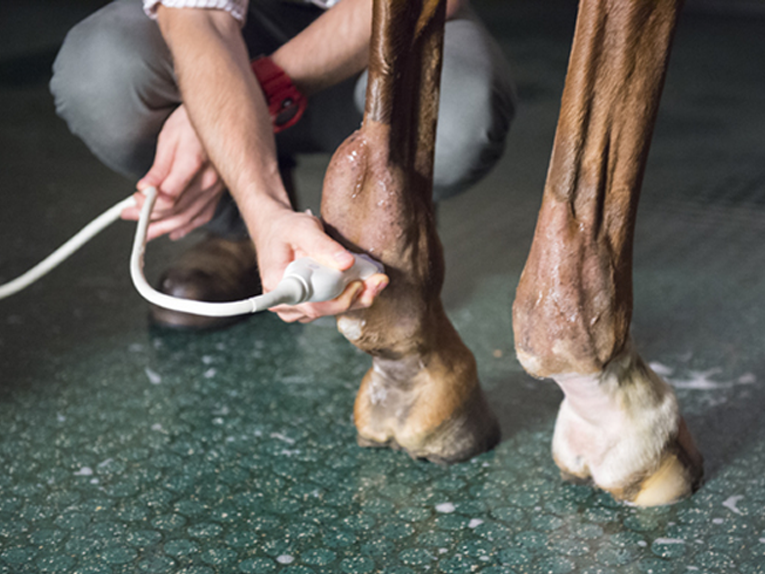Equine tendons are connective tissues made up of tough fibres that connect muscle to bone. In horses, tendons are responsible for transmitting force from the muscles to the bones, which allows the horse to walk, run, and perform a variety of manoeuvres. Equine tendons and ligaments can be damaged by overuse, trauma, inflammation, or other factors. Tendon and ligament injuries are common equine medical problems, and they can lead to pain, swelling, and movement disorders. The examination and management of these tissues is therefore important to maintain the health and athleticism of the horse, with equine tendon ligaments most commonly tested using animal ultrasound machine .
Animal Ultrasound Machine Testing Diagnosis of Equine Tendons
Ultrasonography is the technique of choice for identifying and documenting injuries to equine tendons and ligaments, and its effectiveness in diagnosing tendon ligament injuries has been largely demonstrated. Therefore, equine ultrasound machine testing is part of the routine examination of equine tendon and ligament diagnostic tests.
In the acquisition of tendon ultrasound images, a 7.5 MHz linear probe is typically used, which requires trimming of the metacarpal and lateral palmar trephines to ensure that good contact is maintained between the probe and the skin.
To improve the quality of the ultrasound image, the area is usually immersed in warm water while a coupling agent is applied to the skin and the probe.
To enhance visualisation and improve contact with the skin, an ultrasound pad is usually placed between the skin and the probe.
Please note that as skin ulcers or scratches may appear on the palmar side of the foot, this may have an impact on obtaining high quality ultrasound images.
Ultrasound machine of the equine tendon is important to determine the severity of the injury, the best treatment and the prognosis for recovery.Dawei Veterinary has a wide range of ultrasound diagnostic equipment that is lightweight and flexible, and can be carried around for quicker and easier application, and provides clearer ultrasound images of the equine tendon.
Post time: Sep-27-2023




